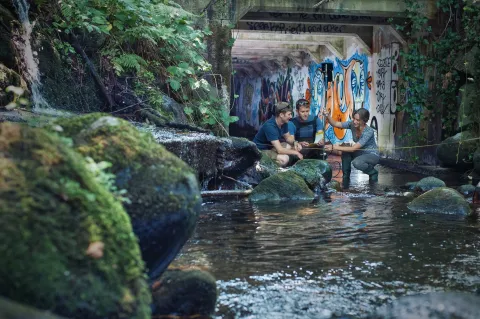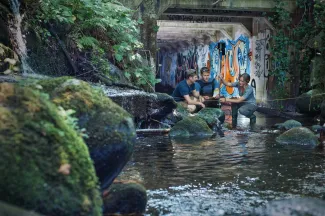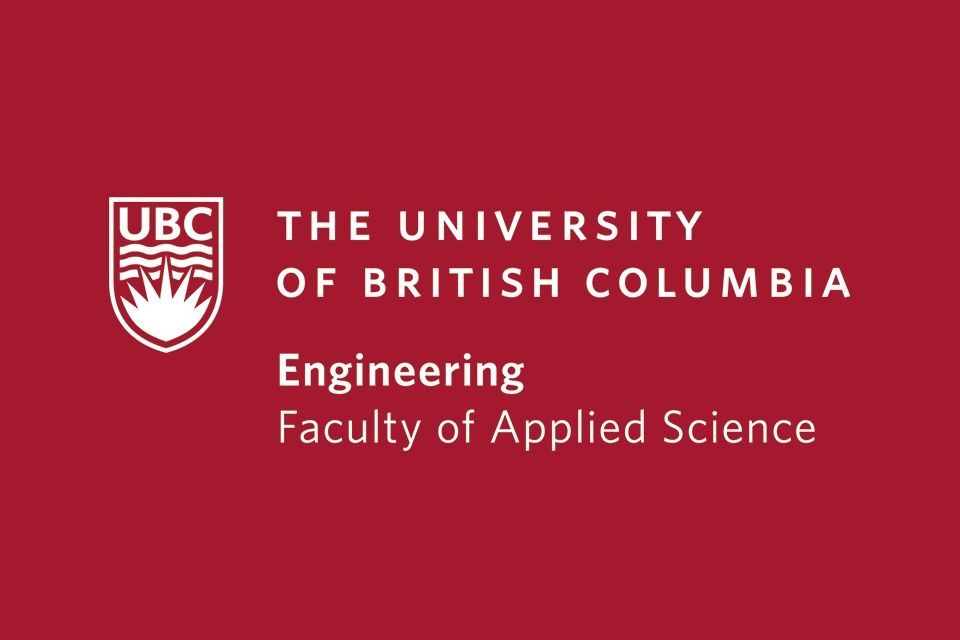"While the issues are complex, environmental engineers are catalysts for change, using their passion for sustainability to come up with innovative ways to address these and other challenges for the betterment of our planet."

- Program:
We are facing profound and complex challenges: The impacts of climate change on communities and ecosystems. The difficulty many people encounter trying to accessing clean water. The devastating effects of air pollution on human health. Social inequities that mean some people are more impacted by environmental issues than others.
While the issues are complex, environmental engineers are catalysts for change, using their passion for sustainability to come up with innovative ways to address these and other challenges for the betterment of our planet.
Environmental engineering focuses on maintaining and improving the health of ecosystems and communities.
It encompasses the small scale, such as remediating a specific site, and the global scale, such as understanding large-scale processes like climate change so as to advise government on appropriate and effective policies to address the climate crisis.
It’s complex work that requires a holistic and integrative approach to problem solving, one that draws on several areas of engineering, the fundamentals of science and engineering science, an understanding of policy, and strong communication skills.

A growing demand for environmental engineers
“Environmental engineers are in high demand,” says Dr. Chintalapati. “Stats out of the US show that this is ranked as one of the best engineering jobs based on future prospects, wage potential, employment and job stability, with a median US salary of $96,530 ($135,000 Canadian) in 2024. Entry-level positions, particularly with industry employers, also pay very well.”

What broader trends are impacting environmental engineering?
Environmental issues are in much greater focus than they’ve ever been historically. Regulations and policies reflect the growing understanding of the need to reduce the negative impacts of energy production, industry development, land use and other activities.
Both businesses and governments are required by policy and regulations to report out on their environmental, social and governance (ESG) performance.
Environmental engineers can play important roles in setting criteria, developing plans to improve performance and reporting on performance in compliance with regulatory requirements.

Net zero waste goals, such as those set by the City of Vancouver, are increasingly common. Achieving these targets requires rethinking waste management, supporting the shift to a circular economy and optimizing recycling rates. Environmental engineers play a crucial leadership role within this context, applying their multidisciplinary knowledge and holistic systems perspective to develop new solutions and processes.
City of Vancouver - Net Zero Circular Economy
How does environmental engineering differ from other engineering areas?
Environmental engineering has many close connections with other engineering programs, most specifically with civil engineering and chemical and biological engineering. That’s reflected in the curriculum at UBC, which requires students to take courses from these program areas.
Yet environmental engineering goes beyond traditional engineering disciplines in both its impact and focus. “It’s about the magnitude of impact you want to have,” says Dr. Etmannski.
“So where chemical engineering might have an impact on the industrial level and civil engineering is very infrastructure focused, environmental engineering takes a global systems approach and works within a deep understanding of the complex interactions of these systems.”
She also argues that environmental engineering offers perspective needed achieve meaningful change.
“The systems thinking aspect of this program is absolutely key,” says Dr. Etmannski. “Many other engineering programs are more product focused, which puts certain boundaries around the design constraints, whether it’s designing a bridge, robotic arm or computer software. But in environmental engineering, you can’t think like that. The boundary is the earth. So there’s a need to look at how systems interconnect and to consider impacts across future generations.”

Interested?
Learn more about environmental engineering and how it could be a great choice for you.
- Watch a video to learn more about our program
- Explore some of the career opportunities open to you as an environmental engineer
- Take a look at the capstone projects past students have worked on by filtering your search for “environmental engineering”
- Read profiles of current environmental engineering students and alumni by filtering your search for “environmental engineering”
There are lots of engineering design teams that require the expertise of environmental engineering students
















